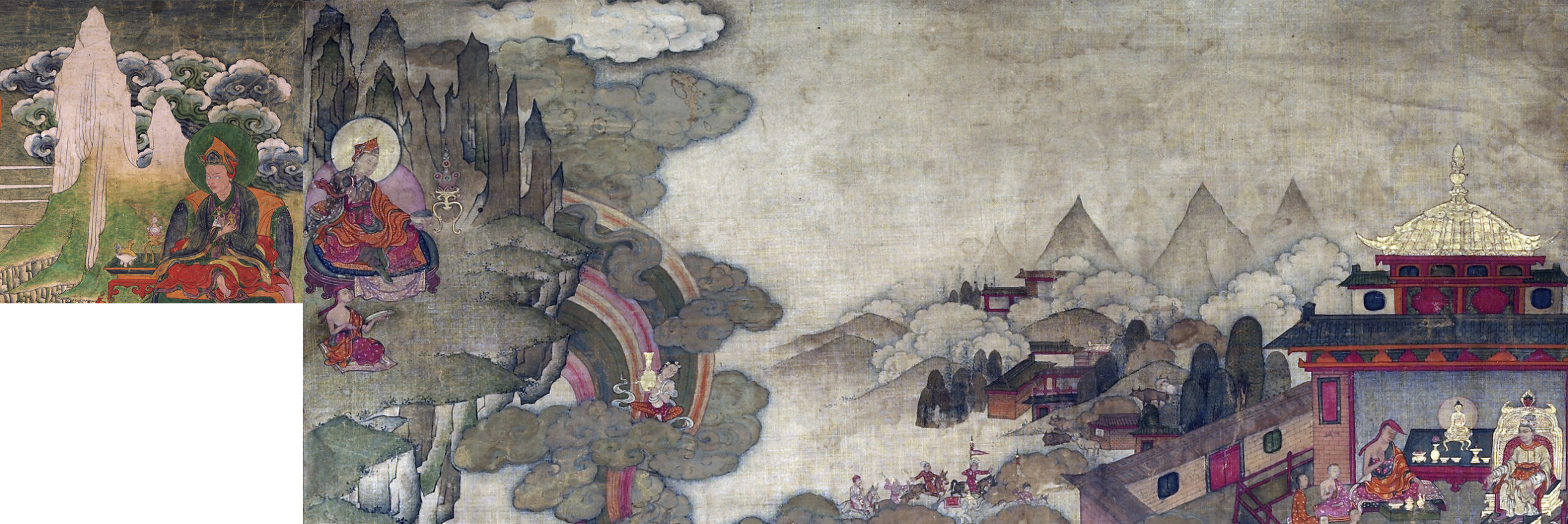
Sacred Landscapes in the Himalayas
Mountains + Sacred Landscapes Conference
Saturday, April 22, 2017
3:00 PM–5:00 PM
Reverence toward the land and the gods that inhabit it is common in most highland cultures. The art, rituals, and literature inspired by the divine power of mountains inspire contemplation about the relationship between humanity and the natural world.
In this panel, part of the annual conference for the New School’s India China Institute, curators Jorrit Britschgi, Elena Pakhoutova, Karl Debreczeny, and Beth Citron will discuss interpretations of sacred mountains and their associations with sacred places represented in the art of diverse cultures of the Himalayan region and beyond.
Making pilgrimages to pay respects to the gods of the mountains, listening to the will of the gods, and taming or appeasing them, are common themes in these Himalayan artworks, which will be discussed at the roundtable. We invite the audience to engage in discussion with the panelists and afterwards, discover representations of sacred landscapes and sacred spaces in our galleries.
This program is part of the New School’s India China Institute annual conference. This year the theme is Mountains + Sacred Landscapes.

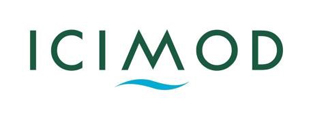


About the Speakers
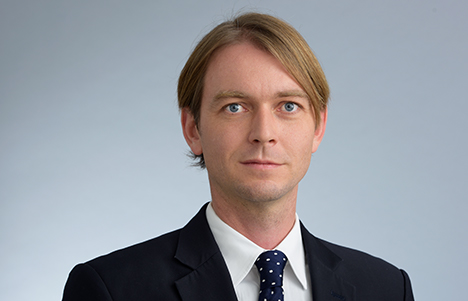
Jorrit Britschgi is Director of Exhibitions, Collections, and Research at the Rubin Museum of Art. He has organized numerous exhibitions with Indian art and cross-cultural projects, being trained in both East Asian and Indian art. Jorrit Britschgi is currently organizing an exhibition on painting from the Pahari region. He joined the Rubin Museum in 2016 after serving as Head of Exhibitions at the Museum Rietberg in Zurich and continues to act as managing publisher of Artibus Asiae.
After studying in China and conducting archaeological fieldwork in China and Bhutan, he received his PhD in East Asian Art History from the University of Zurich. He lectured in East Asian Art and Culture at the University of Zurich before becoming a curator.
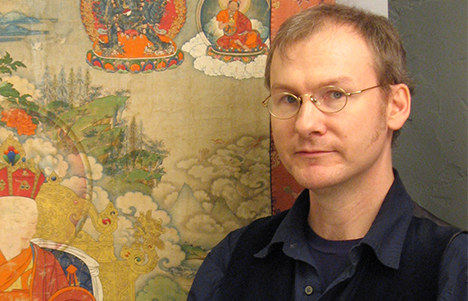
Karl Debreczeny is Senior Curator, Collections and Research, at the Rubin Museum of Art. He completed his PhD in Art History at the University of Chicago (2007). He was a Fulbright-Hays Fellow (2003″“2004) and a National Gallery of Art CASVA Ittleson Fellow (2004″“2006). His research focuses on exchanges between Tibetan and Chinese artistic traditions.
His publications include The Tenth Karmapa and Tibet’s Turbulent Seventeenth Century (ed. with Tuttle, 2016); The All-Knowing Buddha: A Secret Guide (with Pakhoutova, Luczanits, and van Alphen, 2014); Situ Panchen: Creation and Cultural Engagement in Eighteenth-Century Tibet (ed., 2013); The Black Hat Eccentric: Artistic Visions of the Tenth Karmapa (2012); and Wutaishan: Pilgrimage to Five Peak Mountain (2011). His current projects include an exhibition which explores the intersection of politics, religion, and art in Tibetan Buddhism across ethnicities and empires from the seventh to nineteenth centuries. He joined the Rubin Museum is 2006.
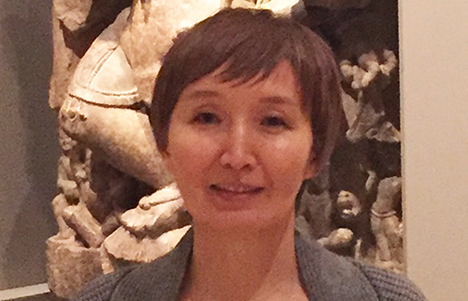
Elena Pakhoutova is Curator of Himalayan Art at the Rubin Museum of Art. She is currently organizing The Second Buddha (opening winter 2018). She also organized Nepalese Seasons: Rain and Ritual (2016) with Dr. Gautama Vajracharya; Collecting Paradise: Buddhist Art of Kashmir and Its Legacies (2015) with Rob Linroth; The All-Knowing Buddha: A Secret Guide (2014) with Karl Debreczeny; Bodies in Balance: The Art of Tibetan Medicine (2014) with Theresia Hofer; Count Your Blessings: the Art of Prayer Beads in Asia (2013); Illuminated: the Art of Sacred Books (2012) with Agnieszka Helman-Wazny; Once Upon Many Times: Legends and Myths in Himalayan Art (2011); the ongoing Gateway to Himalayan Art; and the Tibetan Buddhist Shrine Room (2010, 2013, 2015).
Dr. Pakhoutova completed her PhD in Asian Art History at the University of Virginia in 2009 and is a recipient of Gerda Henkel Stiftung Research Fellowship. She taught at the University of Virginia and the Eugene Lang College at the New School, New York. While living in the Himalayas, Dr. Pakhoutova apprenticed and trained in traditional clay sculpture with Bhutanese artists. Her background in Tibetan Buddhist studies and experience with Himalayan cultures contribute to her interdisciplinary approach to art history. Her research interests include topics such as text and image; art and Buddhist pilgrimage; art production and patronage; narrative in Tibetan visual culture; and contemporary Tibetan art.
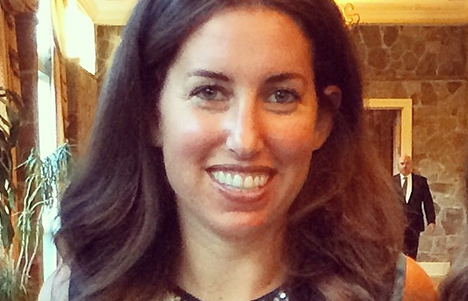
Beth Citron is the Curator, Modern and Contemporary Art at the Rubin Museum. Her exhibitions for the Rubin Museum have included Genesis Breyer P-Orridge: Try to Altar Everything (2016), Francesco Clemente: Inspired by India (2014), Witness at a Crossroads: Photographer Marc Riboud in Asia (2014), and the three-part exhibition series Modernist Art from India (2011″“13). She completed a PhD in the History of Art at the University of Pennsylvania, and has taught in the Art History Department at New York University, from which she also earned a BA in Fine Arts.

